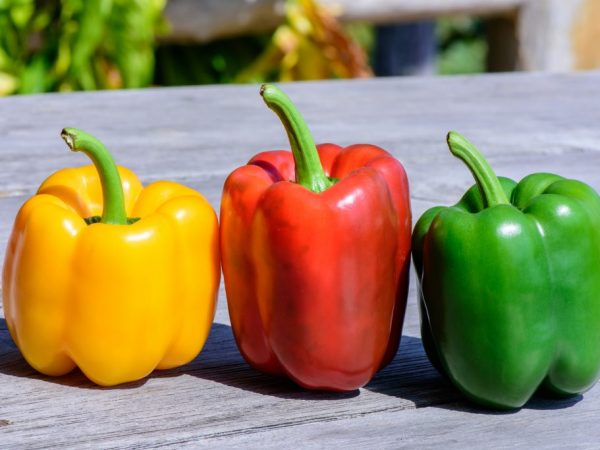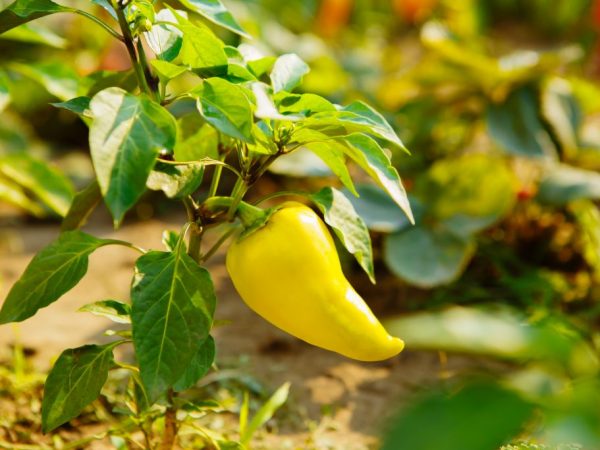Choosing varieties of pepper for the Leningrad region
Growing sweet peppers in such a difficult region for gardening requires careful selection of the variety. In the 70s of the last century, there were developed varieties of pepper for the Leningrad region. Some of them not only manage to ripen in cool summer conditions, but also surprise with high yields and large-fruited.

Choosing varieties of pepper for the Leningrad region
Features of the region
The Leningrad Region is an area with cool summers, few warm days and a lack of light, and oxidized soils. But modern science has made it possible to obtain varieties that are suitable for cultivation in the Leningrad region and St. Petersburg.
Peppers are grown in this area in seedlings. Seeds for seedlings are sown in late February - early March. The grown seedlings are planted in a greenhouse after 65-70 days. It is important to choose varieties that will suit the climatic conditions of the region. Pepper varieties for the Leningrad region must have the following qualities:
- early maturity (90-125 days);
- resistance to low temperatures;
- undemanding to the quality of soils;
- undemanding lighting;
- high productivity.
The best varieties of pepper
Domestic varieties were bred taking into account all the qualities that pepper should have for this region. They also have a special advantage over hybrids, which lies in the fact that the seeds from the harvested crop can be sown next season. Plants from these seeds will be more resistant and adaptable, and the fruits will retain their varietal qualities.
Mastodon
Refers to early maturing peppers that ripen 110 days after germination. For 1 sq. m. 3-4 bushes can be planted. 8-12 fruits are formed on one bush.
Bush characteristic
- semi-determinant type;
- bushes grow 0.8-1.5 m;
- the central stem is well developed;
- lateral branches are spreading with medium foliage;
- leaves are elongated-oval green;
- bushes require a garter to a strong support.
Fruit characteristics
- cuboid, three-chambered;
- weight 200-250 g;
- walls 7-8 mm thick;
- dark red color.
Mastodon is cold-resistant, undemanding to light, highly resistant to tobacco mosaic.
Bagration

The variety will delight you with an early harvest.
Refers to early-ripening sweet pepper varieties, in which the fruits reach technical maturity in 105-115 days, and biological in 125-130 days. Suitable for thickened planting, 6-8 plants per 1 sq. m. On the bush, 8-10 fruits are tied, which gradually ripen over 3-6 weeks.
Bush characteristic
- semi-determinant bush;
- height 0.9-1.2 m;
- spreading branches;
- to increase yields requires the formation of two main stems.
Fruit characteristics
- spherical shape with clear edges;
- four-chamber;
- walls 6-8 mm thick;
- weight 160-200 g;
- bright yellow color.
It has a crispy, juicy flesh and a sweet taste with a mild peppery aroma. Ideal both fresh for summer salads and for preservation.
Bagration is a high-yielding, productive variety that allows with sq. m.collect 7-9 kg of fruit. Has a high resistance to such diseases:
- verticilliosis;
- tobacco mosaic;
- top rot.
Seeds of Bagration peppers are sown for seedlings in March, seedlings are transplanted into the greenhouse in May.
Barguzin
High-yielding sweet pepper, which begins to ripen after 95-110 days from mass germination. Up to 5 bushes are planted per 1 sq. m. 6-7 drooping fruits are tied per plant.
Bush characteristic
- upright bush, powerful;
- semi-determinant, up to 110 cm high;
- branches are not thickened, pinching is not required;
- requires a garter to support.
Fruit characteristics

The fruits are versatile in use
- cone-shaped with a sharp end;
- walls 5-7mm thick;
- weight 180-200 g, length 15-17 cm;
- yellow color.
The fruits are not thick-walled, but they have a sweet and pleasant taste, suitable for drying, canning and preparing various dishes and sauces.
Among the best varieties for this area are also noted: Prize, Intervent, Nafanya, Snegirek, Country, Antique, Kudesnik.
Best hybrids
Hybrid peppers combine the best qualities and show their productivity and quality even in difficult climatic conditions.
And many of them are suitable for cultivation in areas of risky farming. The only drawback of hybrids is that it is rarely possible to get peppers with the same characteristics as the first generation from the seeds of the grown crop.
Pinocchio f1
A super-early hybrid of sweet pepper, which begins to ripen 95 days after sowing. For 1 sq. m. 5-7 plants can be planted.
Fruits on the bush grows elongated drooping with an average weight, but 12-17 peppers are tied on one plant.
Bush characteristic
- bush of semi-determinant type with limited growth of lateral branches;
- grows 70-90 cm in height, spreading with medium foliage.
Fruit characteristics
- conical-elongated shape;
- wall thickness 5-7 mm;
- weight 90-120 g;
- dark red color.
Pepper Buratino has a good presentation and transportability. Differs in high productivity, productivity is more than 8 kg / sq. m. Resistant to tobacco mosaic and top rot.
Elephant F1
A thick-walled hybrid with an early ripening period (95-105 days) and a high yield. The bushes are medium-sized, semi-determinate up to 1.1 m high. Optimal thickening when planting 4-5 plants per 1 sq. m. From 7 large fruits are formed on each bush.
Fruit characteristics
- prismatic shape;
- three-chambered with clear edges;
- weight 200-250 g;
- size 11x9 cm;
- wall thickness 7-10 mm;
- Red color.
Peppers Elephant F1 have a crispy and firm flesh with a rich taste. A versatile culinary destination. Differs in long-term storage at a temperature of 2-7 ° C. The fruits can be stored for 2-3 weeks.
Among the hybrids, sweet peppers that are well recommended for cultivation in the Leningrad region, the best species are noted: Centurion F1, Isabella F1, Belladonna F1, Cardinal F1.
Conclusion
A large selection of varieties adapted for growing in difficult climatic conditions allows you to get a high-quality harvest in the Leningrad region. By cultivating the best of them, you will be satisfied with the result you get.


